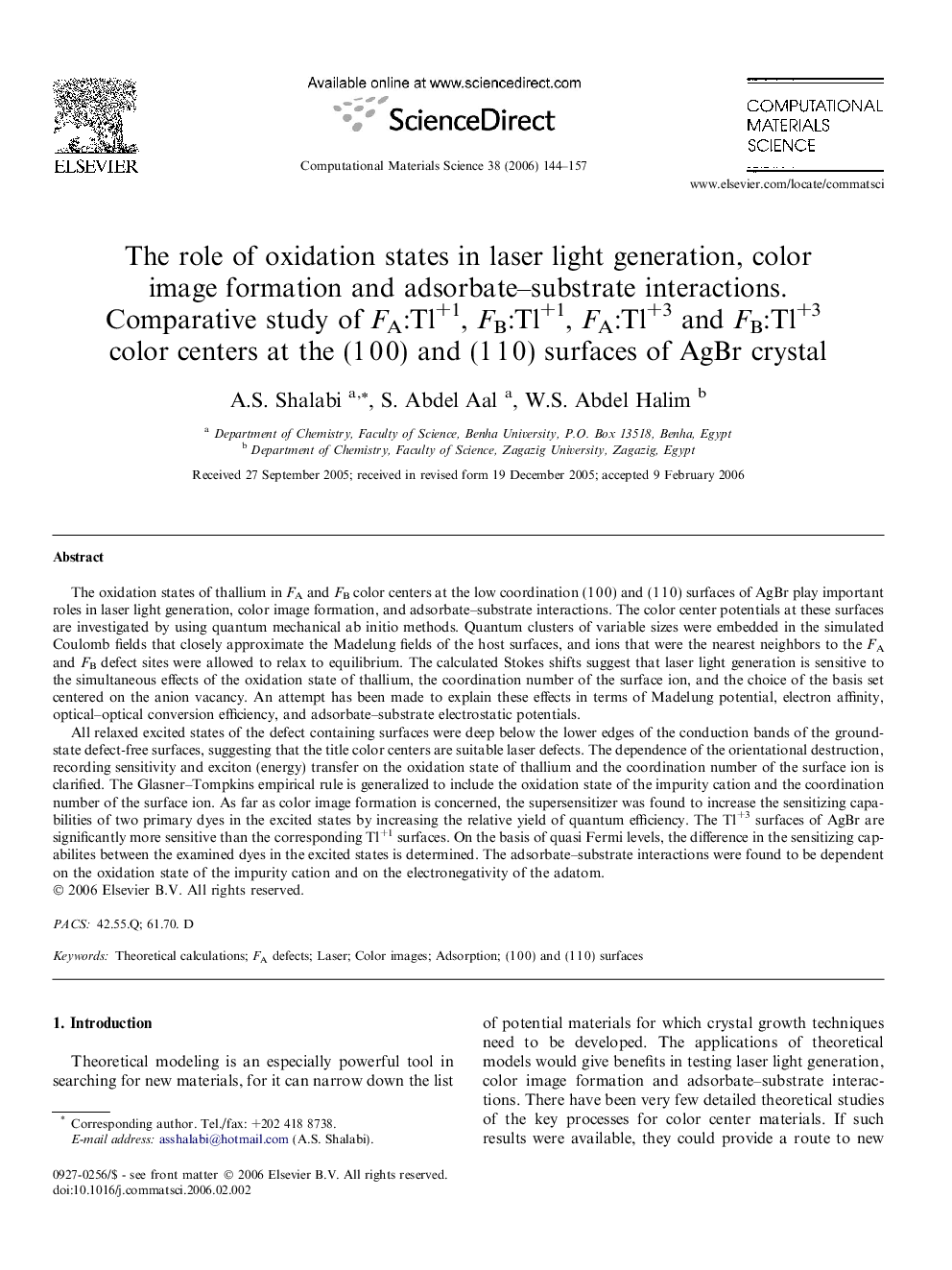| Article ID | Journal | Published Year | Pages | File Type |
|---|---|---|---|---|
| 1564471 | Computational Materials Science | 2006 | 14 Pages |
Abstract
All relaxed excited states of the defect containing surfaces were deep below the lower edges of the conduction bands of the ground-state defect-free surfaces, suggesting that the title color centers are suitable laser defects. The dependence of the orientational destruction, recording sensitivity and exciton (energy) transfer on the oxidation state of thallium and the coordination number of the surface ion is clarified. The Glasner-Tompkins empirical rule is generalized to include the oxidation state of the impurity cation and the coordination number of the surface ion. As far as color image formation is concerned, the supersensitizer was found to increase the sensitizing capabilities of two primary dyes in the excited states by increasing the relative yield of quantum efficiency. The Tl+3 surfaces of AgBr are significantly more sensitive than the corresponding Tl+1 surfaces. On the basis of quasi Fermi levels, the difference in the sensitizing capabilites between the examined dyes in the excited states is determined. The adsorbate-substrate interactions were found to be dependent on the oxidation state of the impurity cation and on the electronegativity of the adatom.
Related Topics
Physical Sciences and Engineering
Engineering
Computational Mechanics
Authors
A.S. Shalabi, S. Abdel Aal, W.S. Abdel Halim,
